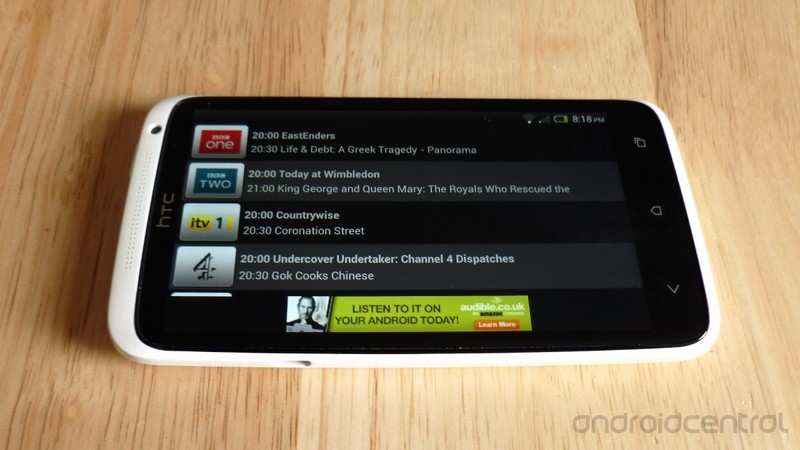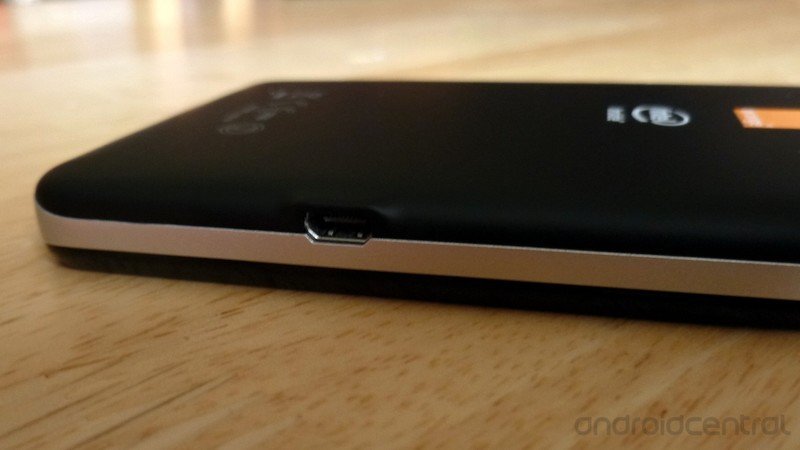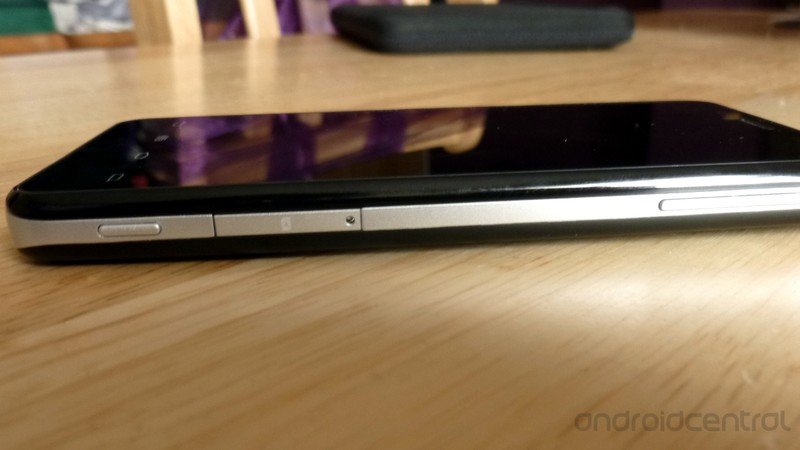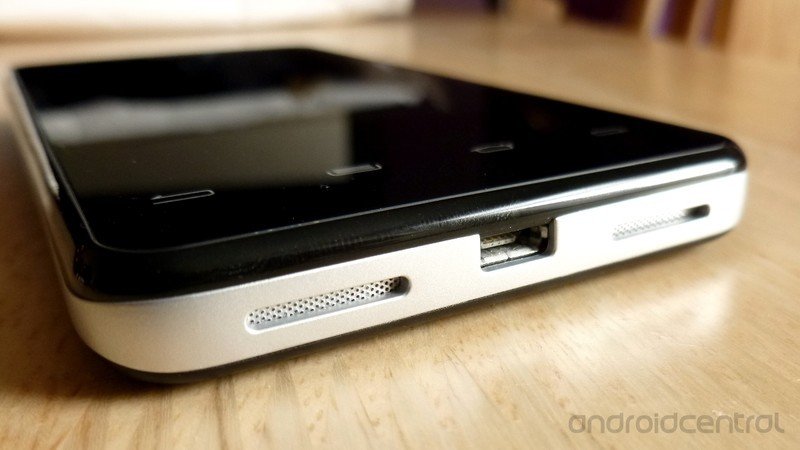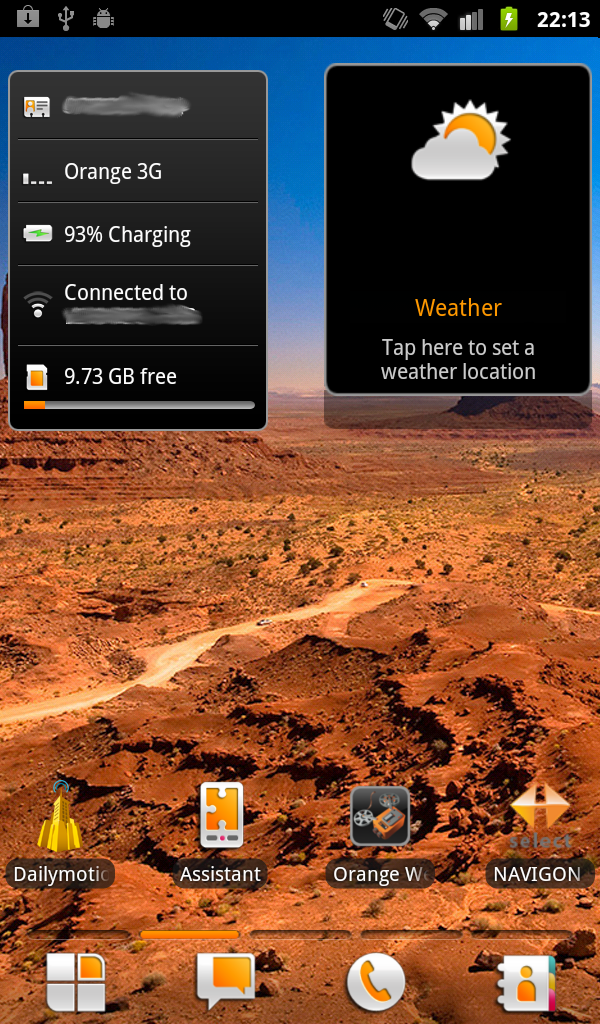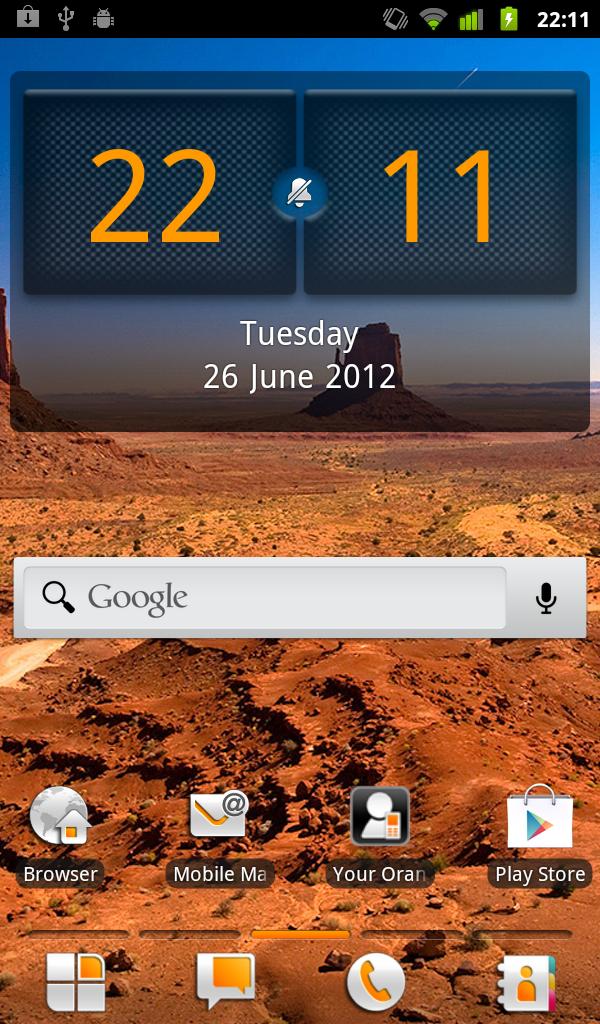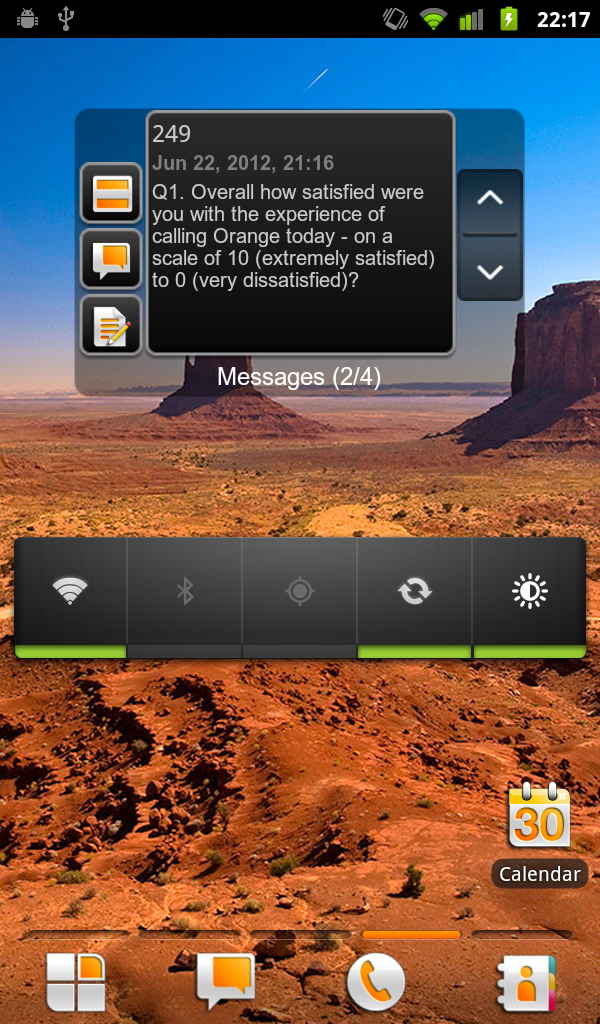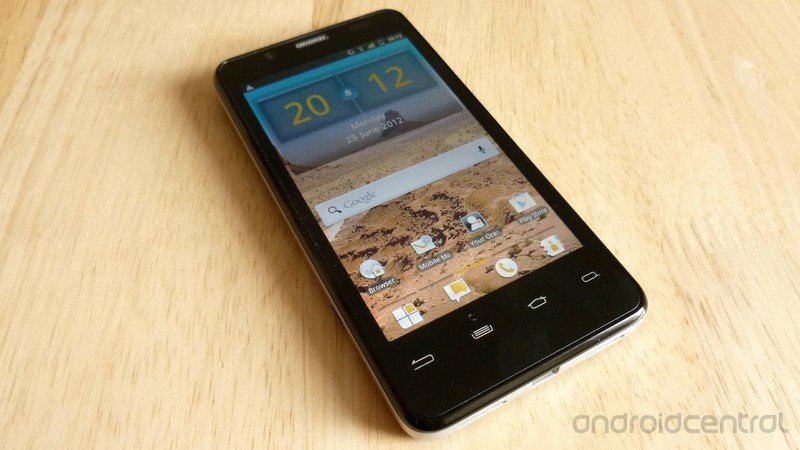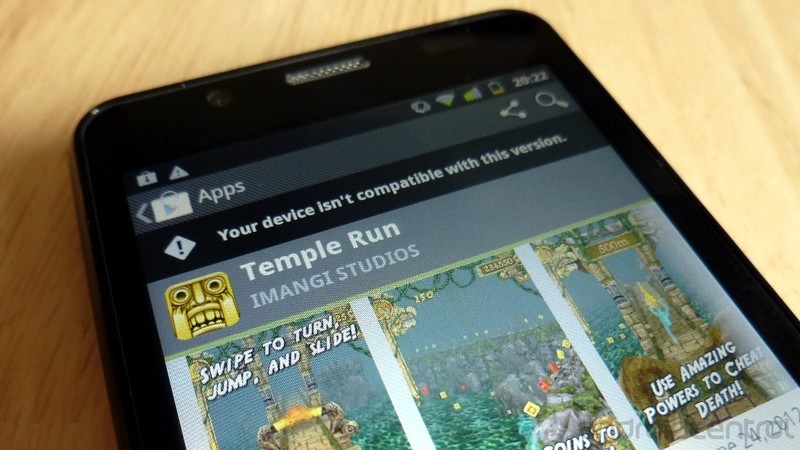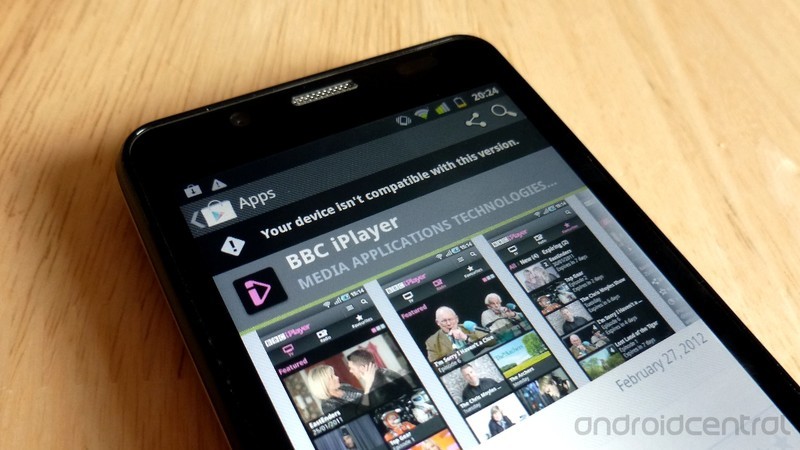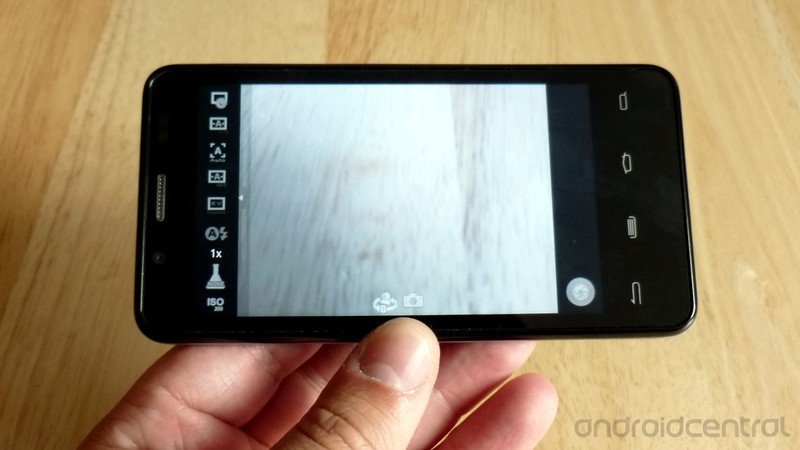Orange San Diego review

Intel finally arrives on Android, but is it everything we were hoping for?
The Android/Intel love affair kicked off officially in January back at CES in Las Vegas. Back then, the computing giant took to the stage to show off their new, prototype hardware running on its Medfield chipset. The demonstration was impressive, boasting incredible performance from a single-core processor running under a customized version of Gingerbread.
Almost six months on, and in the UK at least, the first Intel-powered Android smartphone has made it to market. Launched in partnership with UK carrier Orange, the San Diego is the first of what Intel's hoping will be a host of devices from Intel. The launch event in London made it clear the phone would be aggressively marketed, and indeed this marketing has already begun. This is the first own-brand smartphone that Orange has ever pushed TV advertising for. And those ads focus on one thing -- speed.
Promising performance on par with dual-core phones at an affordable price, the San Diego, on paper at least, is an enticing prospect. That's all well and good, but how does it measure up in real life? Find out after the break, as we walk you through the Orange San Diego.
Pros
- Excellent price point, and has a really nice looking display. Delivers speedy performance on par with some multi-core devices, and is capable of handling some pretty hefty applications. Decent battery life
Cons
- No matter how much they've done with it, it's still Gingerbread. Odd screen resolution tricks some apps into thinking it's a tablet, and it's incompatible with some popular apps and games. Boring to look at, it looks and feels like a prototype device.
The Bottom Line
Get the latest news from Android Central, your trusted companion in the world of Android
It's a case of "nearly, but not quite" for the San Diego. The Intel heart is extremely promising, but in this case the device they've put it in lets it down. The screen resolution is extremely frustrating at times. Despite looking nice, phone apps thinking they're running on a tablet isn't helpful, and the San Diego is a little boring to look at. That said, it leaves us excited for the future of Intel hardware. We're going to see some pretty exciting things when they get to grips with Ice Cream Sandwich. When Intel's partnership with Motorola kicks into gear, we're sure we'll be in for a treat.
| Video walkthroughHardware reviewSoftware reviewCamera testsWrap-up | Initial hands-on with the Orange San DiegoInitial walkthrough and gallery |
Orange San Diego video walkthrough
Orange San Diego hardware
Appearance isn't everything to a device, which in the San Diego's case is a good thing. Put plainly, at first glance it's a boring black slab. It isn't completely monotonous, with a silver band round the sides, but essentially it's a black rectangle like we've seen countless times before. It bears a strong resemblance to the Medfield reference device we saw at CES, and even to the recent BlackBerry 10 Dev Alpha device. And therein lies the biggest problem with the appearance of the San Diego. It looks (and feels) too much like a prototype.
It isn't all bad though. It's relatively thin, very light, and with a soft touch finish on the (non-removable) battery cover, it feels very nice in the hand. The size of the unit helps here too, packing a 4.03" screen -- which, yes, is pretty small by todays standards. But it fits beautifully into the hand. Especially if you have smaller hands.
Speaking of the display, there's something that needs to be said as early on as possible. The resolution is extremely frustrating. Let us explain.
The resolution on the San Diego is 1024x600, which rightly so many wouldn't be that familiar with. On a display this size, the PPI comes in at 294 (the HTC One X is around 312 by comparison), which is fantastic. No, really, it is. The display looks gorgeous, especially considering this is a mid-range device costing £200, and videos look real good on it. Compared to the recently-reviewed Motorola Motoluxe, which costs around the same, is like night and day.
So it all sounds great, so why so bad? Well, 1024x600 is more commonly found on tablet devices, the HTC Flyer for example. On a phone, this seems to trick some applications into thinking it is a tablet. Swiftkey 3 for example, but that wasn't really an issue as it still functioned perfectly.
Shown here is the UK only, beta app, from TVCatchup. On the left, the phone interface displayed perfectly on the HTC One X. On the right, the tablet interface on the Orange San Diego. It still works, but everything is smaller. A theme common throughout the phone. Lots of things, icons, menus within apps, just feel too small. It isn't the end of the world, but, the point remains the same. Tablet interfaces don't generally work on phones, and this is a major weakness for the San Diego. Anyway, moving onwards.
Up top we have the power button and the 3.5mm headphone jack. On the left side of the phone is simply the microHDMI-out port, while on the right we get the volume rocker, microSIM tray and a dedicated camera button. On the bottom is the standard microUSB charging port, and two speakers, one on either side.
Completing the hardware on the outside, is a VGA front facing camera, and an 8MP rear shooter complete with LED flash. With this being an Intel phone though, it really is about what's on the inside, if you excuse the pun.
The San Diego packs 16GB of internal storage and no microSD card slot. Well, strictly speaking that isn't true. Paul O'Brien over at MoDaCo, took his to pieces and found such a slot lurking behind the supposedly non-removable battery door. It might be in there, but, out of the box at least, it isn't functional. RAM is set at a respectable 1GB, and the battery sits at 1460mAh. And then there's the processor.
Formerly known as Medfield, the San Diego run's the 1.6GHz Intel Atom Z2460 single-core, hyper-threaded processor clocked at 1.6GHz. It's important to remember that this isn't like any other single-core processor we've seen to date. The hyper-threading technology means that this essentially performs like a dual-core processor, but with less drain on battery life. Essentially, it uses free cycles on one core to simulate a second, a trick that's been used in Intel's PC chips for almost a decade now. Aside from the branding, there is no indication that this phone is anything different to the technology in any other mid to high range Android smartphone currently on the market. And that's how it should be.
So, hardware is hardware. The exciting part of this phone's hardware isn't visible. The effect it has on the overall user experience is though, so we'll jump into that next.
Orange San Diego software
We'll get it out of the way straight away. Yes, it's a Gingerbread (Android 2.3) phone. No, we don't necessarily agree with or like that fact (especially since we're just getting stuck into Jelly Bean). But Intel have made the decision to go this way and to make it work for them. And that's what matters -- that it works. The average consumer who will likely pick this phone up isn't likely to be a hardcore Android fanatic. It's aimed at mainstream, mid-range consumers -- consumers who will buy a phone and want it to work, and work well, with a speedy user experience. The good news is overall the user experience is excellent. For a £200 phone, it will be difficult to beat, Gingerbread or no.
Orange themselves have had very little input into the software. In essence, we get a custom -- incredibly orange -- launcher and some of the carriers own applications, or bloatware if you prefer. Actually, the Orange apps are those which Orange customers would likely end up downloading themselves anyway -- Your Account, Orange Wednesdays, their own gesture shortcuts app, nothing too offensive. Also built in is the full-bore Navigon satellite navigation app, complete with offline maps. Retail price for this is £40 from Google Play, so it's not a bad free app for the phone to come with. It is part of the Orange Swapables scheme though, so you will need to enable this on your account to take advantage.
So, it's pretty much unmolested Gingerbread. And that's not surprising considering the input that Intel have had. It's their creation, and it's their tuned version of Gingerbread, and it works really well on their hardware.
The San Diego is so snappy, and so smooth that it's easy to forget sometimes that you're holding a mid-range device. Flicking through the launcher, the app drawer, the menus, all happens with speed and grace. General operations are incredibly smooth. Apps are launched done with speed comparable to higher-end phones like the One X. Equally, with 1GB RAM on board, it does a decent job of keeping things going in the background. Positively, there doesn't seem to be any sign of slowdown when you're bouncing in and out of applications. So the user experience on the San Diego is extremely good. It leaves us wondering what we're going to see from Intel devices running Ice Cream Sandwich, or hopefully even Jelly Bean going forward.
Speaking of applications, Intel claims that 97% of all apps in the Play Store will work on their platform. This might be the case, but don't hope to play any Temple Run, at least not yet. Well, not unless you want to pay for the new Temple Run Brave that is, that works. The latest version of Flash 11 isn't supported either, which in the UK means that the BBC iPlayer app won't work. A little annoying, but then Flash for Android is in the midst of a slow, lingering death anyway.
Likewise with a few paid games, including one of our favorites, Sprinkle. It's not as if the San Diego isn't capable of playing such titles either. We loaded up Grand Theft Auto III on ours to put it through its paces. It downloaded just fine from the Play Store, it opened just fine, and downloaded the additional content just fine. It also plays the game just fine. Nothing spectacular, but it works, and it plays pretty well. It did just fine on a decent length session, although pressing the home button instead of closing the game properly did cause things to flip out a little once or twice.
App compatibility isn't as bad as it sounds though. Sure, it's frustrating to find out an app you once paid for doesn't work on your new device. But, this issue is hardly unique to Intel's hardware.
There are three different ways -- all of which are way above my head -- in which applications can be run on the Intel hardware, which results in very little incompatibility. We can only hope that as the platform becomes more widespread, developers will take it on board and it'll all work, all over the show.
A final word on software -- there is a built in screenshot option, with the same button combination as Ice Cream Sandwich. It's seriously flawed though. Getting a successful grab without the "ringer volume" box in it seems to be nigh on impossible. You're probably better off going for a third party option. It's a nice idea, but with a flawed execution.
Orange San Diego camera
Starting off at the front, the front facing camera on the San Diego isn't anything to write home about. It's not the worst we've ever seen, it's just about adequate for the likely uses of it.
The rear shooter is a little more promising. The San Diego packs an 8MP rear camera with LED flash, and an interesting burst mode that can take 10 frames in just under a second. While difficult to time, we'll say it's true. It fires off those shots like lightning. The quality isn't terrible in burst mode either. And, while only so much can be expected of a phone camera, it is useful for trying to capture movement.
The standard images produced by the rear camera are OK. Nowhere near the quality of the 8MP cameras that are to be found on the Samsung Galaxy S III or the HTC One X, but again, for a mid-range device it's good enough. The camera app has itself a decent selection of options to tweak, too. As an everyday point and shoot, it will suffice, but outdoor shots can tend to look a little gloomy, unless the lighting is absolutely spot on.
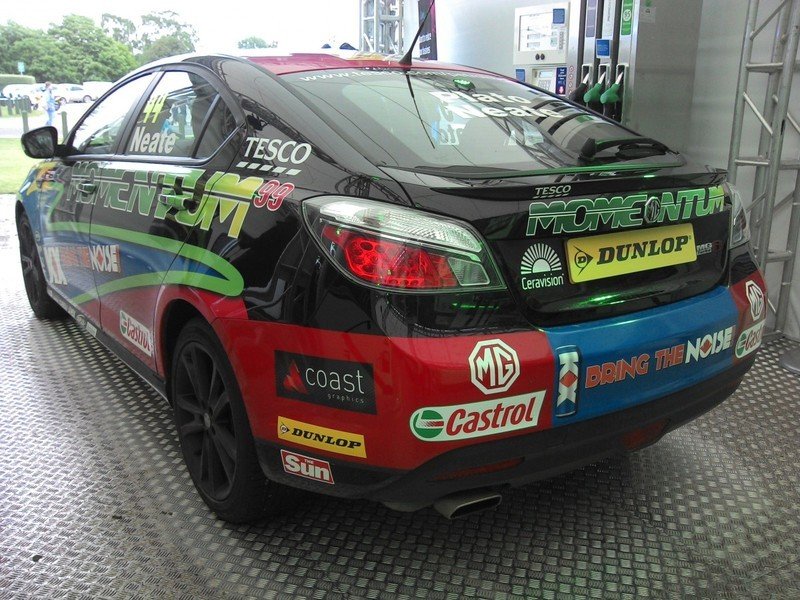



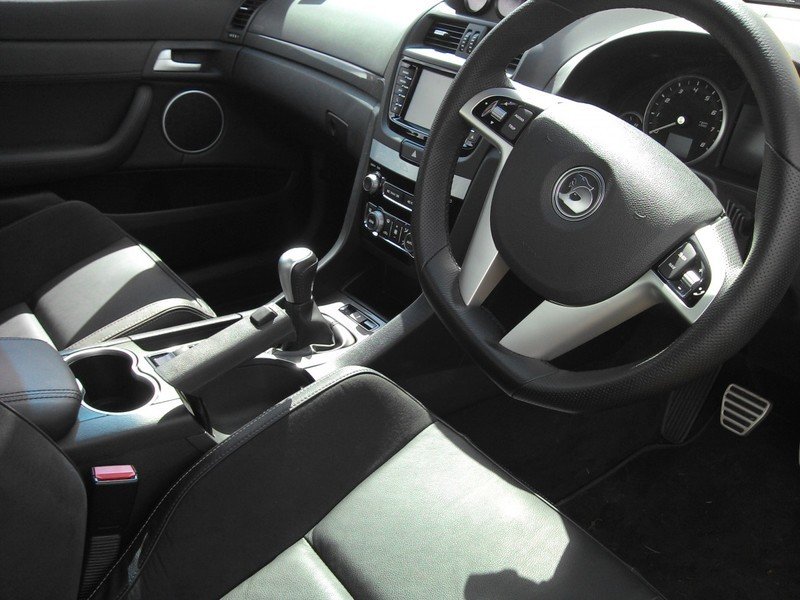



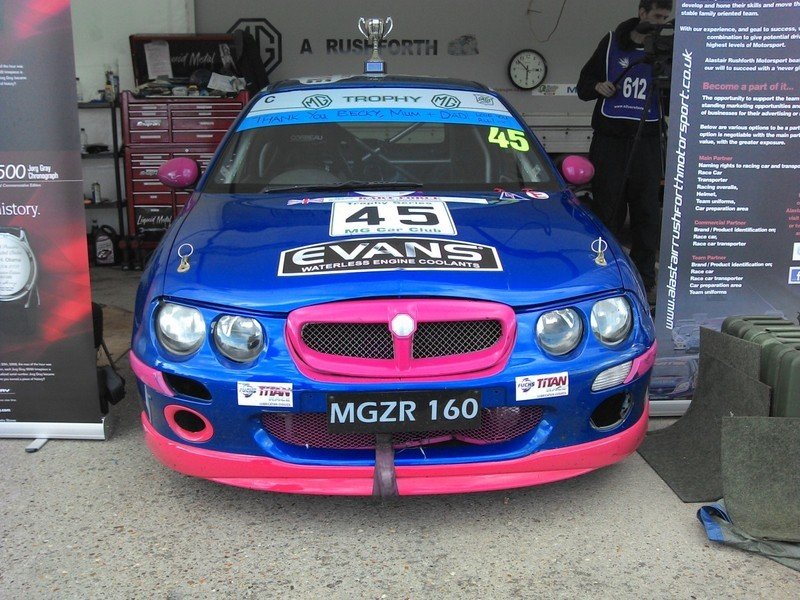
The San Diego is capable of recording at 1080p, but is set to 720p as standard, probably wise considering the non-expandable storage on the phone. Recording at 720p produces some half decent videos, and that's if we're being polite. Even in ideal lighting conditions, the videos produced at 720p are simply sub-par. The colors are fine, but video footage lacks the crispness of high-end phone cameras.
Orange San Diego battery life
Battery life is one of the key talking points for Intel's new smartphone processors. But is it as good as they say it is? Well, yes, and no.
Under the right circumstances, the San Diego will still burn through battery like it's going out of fashion. Playing the Android Central podcast on YouTube, on full brightness and on WiFi used a whopping 40% of the battery. This isn't any worse than a comparison with the quad-core One X, but proof that some things still just burn battery. This was an extreme test, but we're being thorough.
At the other end of the scale, left on the nightstand at night not plugged in, it was surprisingly frugal. During this period -- screen off, WiFi connected -- the San Diego dropped less than 1% per hour that it was left there. Over the course of a night's sleep it was around twice as efficient as the One X.
And, in the middle, some purposefully light use -- a weekend's camping at a racetrack without a charger -- the San Diego stood up really well. A bit of light internet browsing, taking photos, being turned off at night,
But did it ever struggle to make it through the day? A normal, regular day? No. The AC staff are all -- naturally -- pretty heavy smartphone users. With plentiful e-mailing throughout the day, Twitter, Google+, some light gaming sessions and a brief Netflix viewing, the San Diego still had enough in the battery in the evening to not need to worry about plugging it in until bedtime. Battery life is all about how you use it though, we've proved it's possible to burn the battery to death in the space of a couple of hours. But, for most users, getting through the day without worrying about having enough battery to get home will be enough.
Don't forget too, that the San Diego only has a 1460mAh battery, not the biggest yet offering up pretty decent performance. A manufacturer will always try and sell themselves in the best possible light, but the San Diego lasts much longer than both the Tegra 2 and Tegra 3 phones carried alongside it throughout this review period. Pretty impressive, especially considering that performance is in no way compromised.
Orange San Diego hackability
So, what can you do with an Intel phone then. Sadly, at least in this case, almost nothing. The bootloader is locked, and apparently, that's the way it's going to stay. Again, Paul O' Brien has been doing the digging, and was returned the following statement --
"Security of the platform is very important to our customers. The device comes with an OS that is fairly flexible and you can load a large number of apps that don't impact the ROM on the phone itself. If phones aren't security locked it's possible that someone could develop a virus that could cause a large amount of harm to the device and/or personal security of our customers. One of the features of our devices is the programmable security engine on the platform. This is done to protect the ROM and the boot loader from corruption or from being overwritten. All production devices are secured utilizing keyed encryption. For these reasons, the San Diego can't be unlocked, and we don't have any future plans to offer the ability to unlock it."
It would have been nice to tinker, especially considering the previous Orange phones have been pretty well received in the hacking community. The San Diego will have to sit this one out.
Wrap-up
It's a case of "nearly, but not quite" for the San Diego. The Intel heart is extremely promising, but in this case the device they've put it in lets it down. The screen resolution is extremely frustrating at times. Despite looking nice, phone apps thinking they're running on a tablet isn't helpful, and the San Diego is a little boring to look at. That said, it leaves us excited for the future of Intel hardware. We're going to see some pretty exciting things when they get to grips with Ice Cream Sandwich. When Intel's partnership with Motorola kicks into gear, we're sure we'll be in for a treat.
